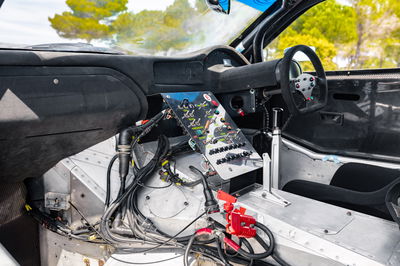The Judd V10-Engined 'Formula Supra' Is Finished And Thoroughly Awesome
If you have a Toyota GT86 powered by a Ferrari 458’s naturally-aspirated V8 in your garage, where do you go from there? That was the project car quandary faced by pro drifter Ryan Tuerck, but thankfully, he’s devised a way to one-up the mighty ‘GT4586‘.
His solution is another Toyota engine swap, with time using a GR Supra. And since the Supra starts with two more cylinders than a GT86, it’s only fitting that the cylinder count is upped for the transplanted power plant too. Yep, it’s packing a V10. An obvious choice for this would be an S85 V10 given how many of these BMW made and the GR Supra’s Bavarian DNA, but no - Ryan wanted a Judd V10. And just over a year after the first announcement for the project, it’s done. Worth the wait? You betcha.
The name ‘Formula Supra‘ is justified by more than just the configuration of the engine - the Judd V10 has proper F1 roots. It’s built by British company Engine developments, which John Judd and Sir Jack Brabham founded in 1971. The V10 has been in production for more than three decades, with derivations of it ending up in various F1 cars.
Tuerck’s Supra uses a Judd GV4, which was designed for sports car racing, but who cares - this is as close as you can feasibly get to powering a modified road car with an F1 engine. It certainly has some impressive numbers, weighing 145kg, developing 730bhp and revving to 11,000rpm. The unit can go around 2000 between rebuilds, making it a popular option for people running old F1 cars for sh-ts and giggles.

Although the whole project hinged around the V10, it was just one small(ish) part of a much bigger story. This being a high-end drift car, little of the stock car was to remain. It was stripped down to a bare shell, with the front and rear ends removed. The suspension is entirely new, with much wider tracks and a thoroughly revised setup at the front allowing for significantly more steering angle.
The V10 powers the rear wheels via a Hollinger sequential gearbox and a beefy rear differential assembly that can be easily removed and switched out depending on the ratio Ryan needs for the drifty task in hand.
We’ve heard the car fire up and idle noisily at 2,000rpm, kicking out an absurdly angry din from its side-exit exhausts. Soon we’ll be able to watch the dyno run, which will be a real treat for the ears.















Comments
No comments found.